Table of Contents
From the earliest cave paintings to contemporary masterpieces, flowers have been a perennial muse for artists across cultures and centuries. Their delicate beauty, vibrant colors and intricate forms have ignited the flames of creativity and left an indelible mark on art and culture worldwide. In this article, we embark on a captivating journey through history to explore how flowers have played a central role in inspiring creativity and enriching the human experience.
From the earliest cave paintings to contemporary masterpieces, flowers have been a perennial muse for artists across cultures and centuries. Their delicate beauty, vibrant colors and intricate forms have ignited the flames of creativity and left an indelible mark on art and culture worldwide. In this article, we embark on a captivating journey through history to explore how flowers have played a central role in inspiring creativity and enriching the human experience.
The Ancient Canvas: The artistic affinity for flowers can be traced back to ancient civilizations. In the frescoes of Pompeii, the lotus flower symbolized purity and rebirth, while Egyptian hieroglyphs often incorporated stylized floral motifs. These early depictions underscore the timeless fascination with botanical beauty.
The Renaissance Flourish: During the Renaissance, the portrayal of flowers in art reached new heights. Artists like Leonardo da Vinci and Jan van Eyck depicted flowers with scientific precision, reflecting the era’s burgeoning interest in botany. Floral motifs adorned tapestries, manuscripts and paintings, symbolizing everything from love and beauty to the fragility of life.
Dutch Golden Age: The Dutch Golden Age of the 17th century saw an explosion of floral still-life paintings. Artists like Jan Davidsz. de Heem and Rachel Ruysch meticulously captured the intricate details of blossoms, often arranged in opulent bouquets. These paintings celebrated the wealth and exoticism of the Dutch East India Company and are considered some of the finest examples of botanical art.
Impressionist Blooms: The Impressionist movement of the 19th century embraced the fleeting beauty of flowers. Artists like Claude Monet and Pierre-Auguste Renoir sought to capture the play of light and color in their gardens. The result was a series of iconic paintings, including Monet’s Water Lilies and Renoir’s Bouquet of Spring Flowers, which celebrated the changing seasons and the ephemeral quality of floral beauty.
Symbolism and Allegory: Flowers have frequently been used as symbols and allegories in art. The red poppy, for instance, symbolizes remembrance and sacrifice in war art, as seen in John McCrae’s famous World War I poem, “In Flanders Fields.” Similarly, the sunflower became a symbol of hope and resilience in the works of Vincent van Gogh.
Modern Interpretations: In the modern era, artists continue to find inspiration in flowers. From Georgia O’Keeffe’s large-scale floral close-ups to the vibrant floral motifs in the works of Frida Kahlo, flowers remain a prominent subject in contemporary art. Their enduring appeal lies in their ability to convey a wide range of emotions and themes, from beauty and vitality to fragility and mortality.
Cross-Cultural Influence: The influence of flowers in art transcends geographical boundaries. From the cherry blossoms in Japanese ukiyo-e prints to the intricate floral patterns in Indian textiles, flowers have played a central role in shaping the visual languages of diverse cultures.
An Ongoing Romance: The artistic journey through the history of flowers reveals an enduring romance between artists and the botanical world. Flowers continue to be a source of inspiration, a vehicle for storytelling and a means of conveying the full spectrum of human emotions through art.
In essence, the artistry of flowers in the realm of human creativity is a testament to the profound connection between nature and culture. Flowers, with their timeless allure, remain a universal language that transcends time and place, inviting us to explore the world through the lens of beauty, symbolism and the inexhaustible depths of the human imagination.
To expand your knowledge on this subject, make sure to read on at this location: About Georgia O’Keeffe – The Georgia O’Keeffe Museum
Flowers in Ancient Art
The relationship between flowers and art traces back to ancient civilizations. In Egypt, lotus flowers adorned the tombs of pharaohs, symbolizing rebirth and the afterlife. The ancient Greeks and Romans celebrated the beauty of flowers in their art, using floral motifs to decorate pottery and architecture.
The enduring connection between flowers and art has roots that stretch deep into the annals of history, reaching back to the earliest civilizations. Let’s delve further into this rich tapestry of floral inspiration:
Egyptian Elegance: In the ancient land of Egypt, flowers, particularly the lotus, held profound symbolic significance. The lotus, with its ability to rise from the murky waters and bloom in pristine beauty, became a potent emblem of rebirth and the afterlife. This symbolism is most notably seen in the decoration of tombs belonging to pharaohs and nobility. Lotus flowers, both in their natural form and stylized renditions, adorned sarcophagi, temple walls and frescoes. They were believed to guide the deceased safely into the next world, emphasizing the profound connection between the earthly realm and the realm beyond.
Greco-Roman Flourish: As the torch of civilization passed to ancient Greece and Rome, the celebration of flowers in art flourished. Both cultures held nature and its beauty in high regard, incorporating floral motifs into their artistic expressions. Pottery, frescoes and mosaics featured intricate depictions of flowers and foliage, lending an air of grace and aesthetics to everyday life. Roses, lilies and laurel wreaths adorned the heads of gods and emperors, highlighting the divine connection with the natural world. The famous Hanging Gardens of Babylon, though primarily known for their architectural marvels, also embraced the splendor of flowers, showcasing a fusion of horticulture and artistic brilliance.
Beyond Decoration: Flowers in ancient art transcended mere decoration. They were imbued with layers of meaning, reflecting cultural beliefs, myths and the human connection to the natural world. These early civilizations recognized that flowers held the power to inspire and convey emotions and thus, they became a universal language of beauty, life and the divine.
Continuity and Evolution: The reverence for flowers in art did not end with these ancient cultures but rather evolved and adapted through the ages. From the delicate floral motifs of the Byzantine Empire to the opulent floral still-life paintings of the Dutch Golden Age, the floral motif continued to inspire artists, each era adding its own unique interpretations and symbolism.
Global Influence: As cultures intermingled through trade and exploration, the influence of flowers in art became a global phenomenon. Chinese and Japanese art celebrated cherry blossoms, peonies and plum blossoms, while Islamic art featured intricate floral patterns in tiles and textiles. These cross-cultural exchanges enriched the tapestry of floral inspiration in art, showcasing the universal allure of nature’s creations.
In conclusion, the enduring relationship between flowers and art is a testament to the timeless and universal appeal of these botanical wonders. They have not only adorned our artistic expressions but have also shaped our cultural narratives, serving as symbols of life, beauty and the enduring connection between humanity and the natural world. Across the span of civilizations, flowers have been the muse that continues to infuse art with beauty, meaning and the essence of life itself.
Looking for more insights? You’ll find them right here in our extended coverage: Nature in Art: Detailed Discussion of Nature Inspired Art and Artists …
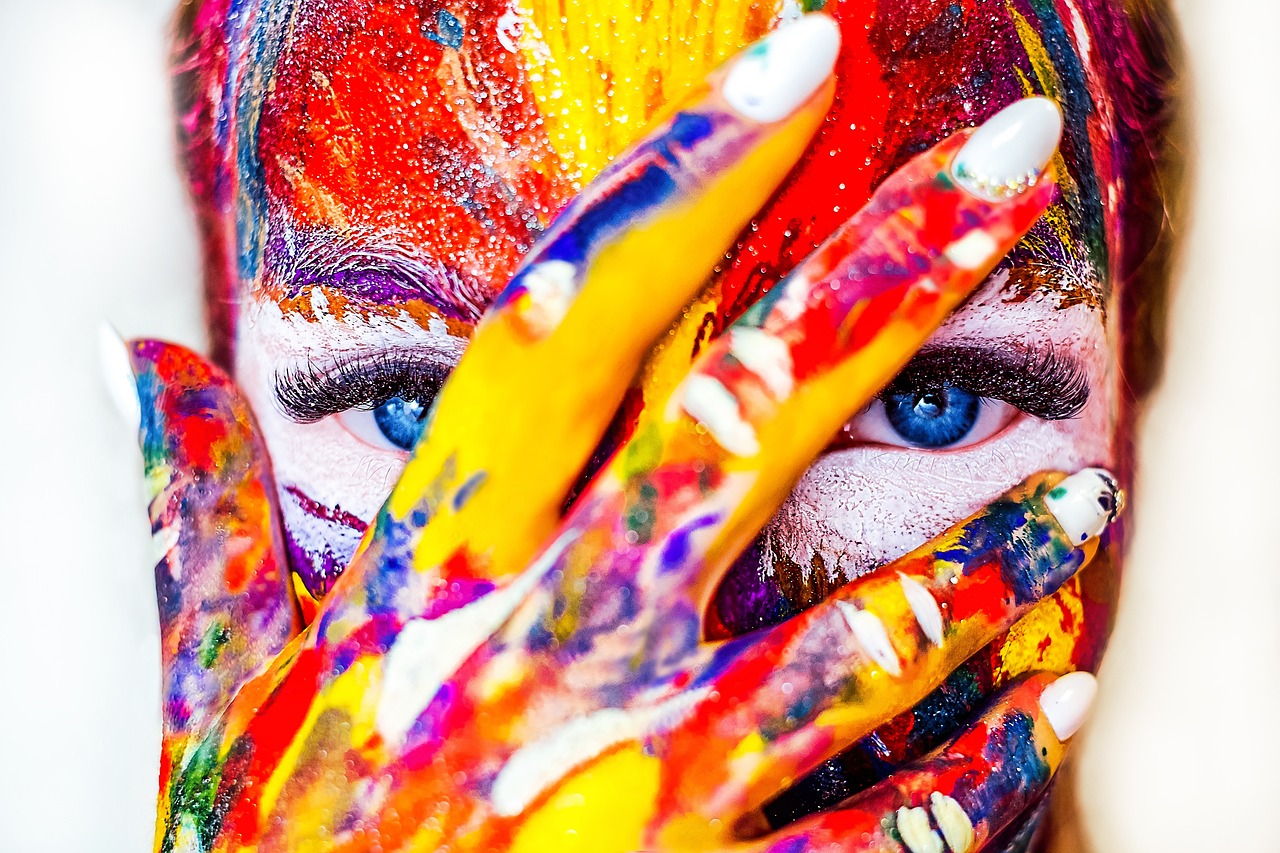
Chinese and Japanese Art
In China and Japan, flowers like the plum blossom, chrysanthemum and cherry blossom have been revered for centuries. They often appear in traditional paintings, ceramics and poetry as symbols of beauty, purity and the transient nature of life.
In China and Japan, the profound reverence for nature’s beauty finds its purest expression through the delicate and enduring symbolism of flowers. Among these, the plum blossom, chrysanthemum and cherry blossom have held a cherished place in the hearts and culture of both nations for countless centuries.
The plum blossom, with its early bloom even in the harshest of winters, serves as a symbol of resilience and hope. Its pristine, white petals emerging from the barren landscape represent the triumph of beauty over adversity. This symbolism has been immortalized in art, where plum blossoms often grace scrolls and paintings, reminding viewers of the power of perseverance.
The chrysanthemum, revered as the “flower of the autumn,” symbolizes longevity and the imperial family in Japan. Its intricate petals and vibrant colors make it a muse for artists, who capture its regal essence in their masterpieces. This flower’s presence in royal crests and traditional kimonos serves as a visual ode to the enduring connection between nature and nobility.
Perhaps the most iconic of them all, the cherry blossom, evokes profound emotions and reflections on the fleeting nature of life. Its brief, breathtaking bloom is celebrated during the revered Hanami festivals in Japan, where people gather beneath the pink canopy to contemplate beauty’s ephemeral nature. Cherry blossoms or sakura, have become synonymous with renewal, rebirth and the cherished moments that pass all too quickly.
These floral symbols extend far beyond mere aesthetics; they offer profound insights into the human condition. They remind us of the intrinsic connection between beauty and impermanence, inviting us to appreciate the fleeting moments of splendor in our lives. Across generations, the enduring presence of these flowers in traditional paintings, ceramics and poetry serves as a timeless reminder of the deep-rooted cultural values that continue to shape China and Japan, forging a bridge between the past and the present.
If you’d like to dive deeper into this subject, there’s more to discover on this page: Art History Courses (Art and Art History) (ARTH) < University of Iowa
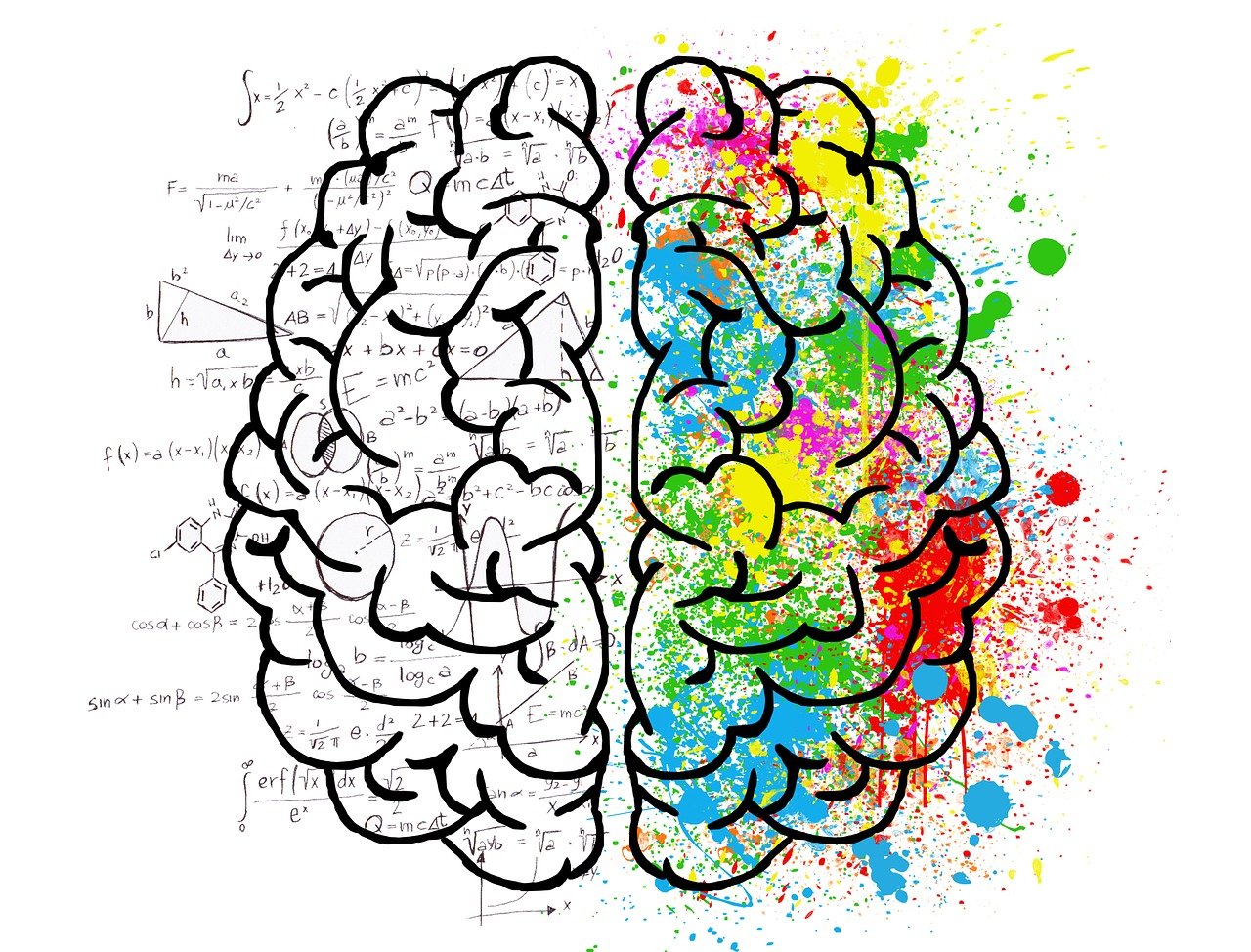
Islamic Art
Islamic art, known for its intricate geometric patterns, also incorporates floral designs. In the Islamic world, the concept of paradise is often depicted as lush gardens filled with blooming flowers, providing a visual representation of the divine.
Islamic art, known for its intricate geometric patterns, also incorporates floral designs. In the Islamic world, the concept of paradise is often depicted as lush gardens filled with blooming flowers, providing a visual representation of the divine.
These floral motifs in Islamic art hold a profound significance that goes beyond their aesthetic appeal. They serve as a bridge between the spiritual and the earthly, offering a glimpse into the Islamic understanding of beauty, nature and the divine.
Symbolism of the Garden: In Islamic tradition, gardens hold a special place as symbols of paradise (Jannah). They are described in religious texts as places of abundance, tranquility and eternal bliss. Islamic gardens often feature fountains, flowing water and lush vegetation, including various types of flowers. These depictions of gardens in art and architecture reflect the Islamic belief in the ultimate reward and heavenly beauty that await the faithful.
Spiritual Connection: Islamic floral designs not only celebrate the beauty of the natural world but also evoke a sense of spirituality. The meticulous craftsmanship required to create these patterns mirrors the devotion and patience required in one’s spiritual journey. Through these designs, artists and viewers alike can contemplate the divine order of the universe, finding a connection between the intricacies of geometry and the harmony of creation.
Unity and Diversity: Islamic floral patterns often consist of repeating geometric shapes that interlace seamlessly to create complex, symmetrical designs. This reflects the Islamic concept of tawhid, the belief in the oneness of God. Despite the diversity of patterns, each design is interconnected, emphasizing the idea that all aspects of creation are linked by the divine.
Historical and Cultural Significance: Floral motifs have been a prominent feature of Islamic art for centuries, spanning a wide geographic region from Spain to South Asia. These designs have evolved and adapted over time, incorporating elements of local flora and cultural influences. This diversity of styles and interpretations speaks to the rich tapestry of Islamic civilization and its ability to integrate and harmonize different traditions.
Contemporary Relevance: Islamic floral patterns continue to inspire contemporary artists and designers. They are not confined to historical artifacts but are also seen in modern architecture, textiles and interior design. This enduring influence underscores the timeless appeal and relevance of Islamic art’s botanical elements.
In essence, Islamic art’s incorporation of floral designs is a testament to the profound connection between the natural world and spirituality in Islamic culture. These designs invite viewers to contemplate the beauty of creation, the unity of existence and the promise of paradise through the lens of intricate, mesmerizing floral patterns. They serve as a reminder that art can be a gateway to a deeper understanding of faith and the divine.
Explore this link for a more extensive examination of the topic: AP Art History Course and Exam Description PDF
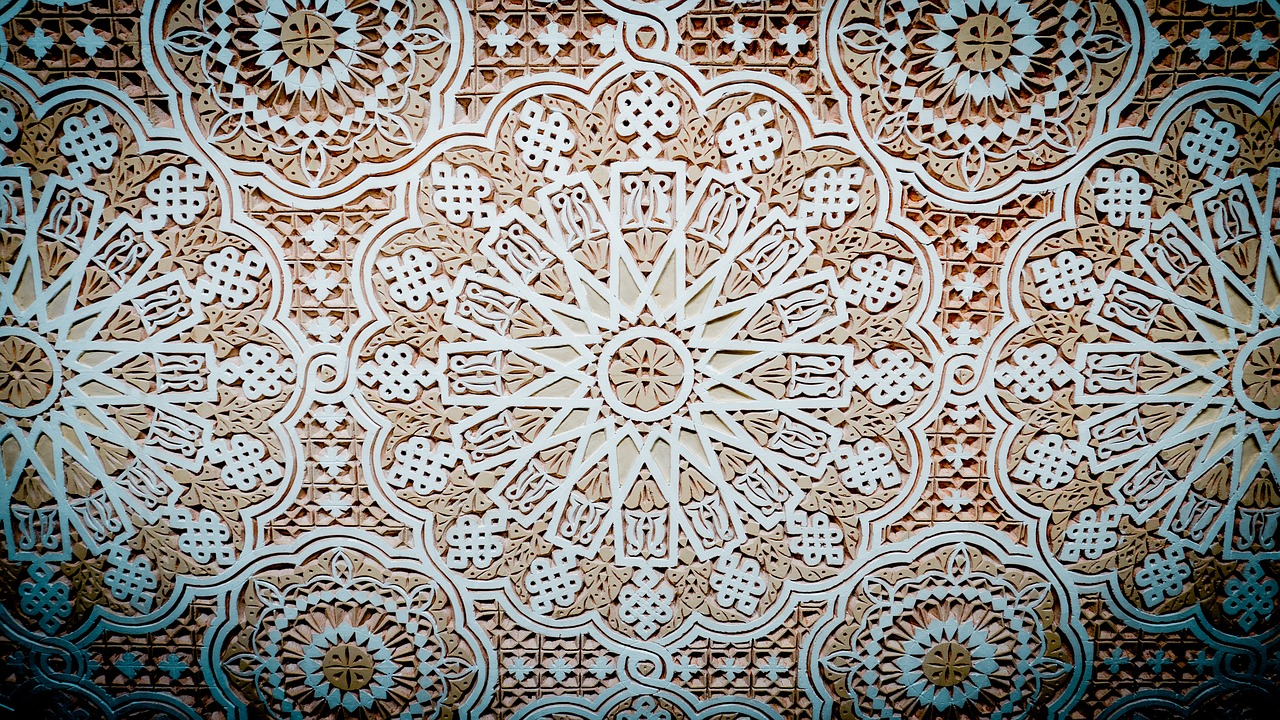
The Renaissance and Floral Symbolism
During the Renaissance, the depiction of flowers in art gained new depth and symbolism. Artists like Leonardo da Vinci and Botticelli infused their works with intricate floral symbolism.
The Renaissance Blossom: A Flourishing of Floral Symbolism in Art
The Renaissance period, often celebrated as a time of profound cultural revival, witnessed an intriguing and enchanting transformation in the depiction of flowers in art. Renowned artists of the era, such as Leonardo da Vinci and Botticelli, ventured beyond mere aesthetics, imbuing their masterpieces with intricate floral symbolism that added layers of meaning and depth to their works. Let’s delve deeper into this blooming Renaissance phenomenon:
Botanical Precision: Renaissance artists displayed an unprecedented level of botanical precision in their floral depictions. They studied flowers with meticulous attention to detail, capturing the subtle nuances of petals, leaves and even the play of light on surfaces. This commitment to accuracy laid the foundation for the rich symbolism that would follow.
Naturalism and Symbolism: Flowers in Renaissance art often served as symbols, conveying messages and narratives within the artwork. They were not merely ornamental; they had specific meanings. For instance, the rose, with its myriad varieties, represented various qualities such as love, purity or even political allegiances.
Religious Significance: The Christian symbolism of flowers was especially prominent during the Renaissance. Artists used flowers to convey religious narratives, with the Virgin Mary often depicted alongside lilies, symbolizing her purity. Similarly, the red carnation became associated with the crucifixion and martyrdom.
Secular Symbolism: Flowers were not limited to religious contexts. They found their way into secular art as well. For example, the tulip, which was introduced to Europe during this period, was associated with prosperity and worldly success. It appeared in portraits of affluent individuals, signifying their wealth and status.
The Language of Flowers: The Renaissance was an era when the “language of flowers” or floriography gained popularity. This practice involved assigning specific meanings to different flowers and using them to convey sentiments without words. Artists incorporated these meanings into their compositions, allowing viewers to decode hidden messages within the artwork.
Botanical Illustration: The Renaissance saw the emergence of botanical illustration as an art form in itself. Artists like Leonardo da Vinci not only painted flowers but also made detailed botanical sketches and studies. Leonardo’s botanical notebooks remain a testament to his fascination with the natural world.
Cultural Exchange: The Renaissance was a time of great cultural exchange, with trade routes connecting Europe to distant lands. This exchange brought new plant species and flower varieties to the continent, inspiring artists to incorporate these exotic blooms into their work and expanding the floral symbolism repertoire.
Legacy in Art: The fusion of botanical accuracy and symbolic depth in Renaissance art set a standard that would influence generations of artists. It laid the groundwork for the continued exploration of the relationship between art, nature and symbolism in the centuries that followed.
In conclusion, the Renaissance era marked a flourishing of floral symbolism in art, where the depiction of flowers transcended mere aesthetics to become a language of expression, conveying emotions, stories and cultural significance. The meticulous observation of nature and the infusion of deeper meaning into floral representations remain a timeless legacy, reminding us of the enduring power of flowers to communicate profound messages through the medium of art.
To expand your knowledge on this subject, make sure to read on at this location: Carnegie Online
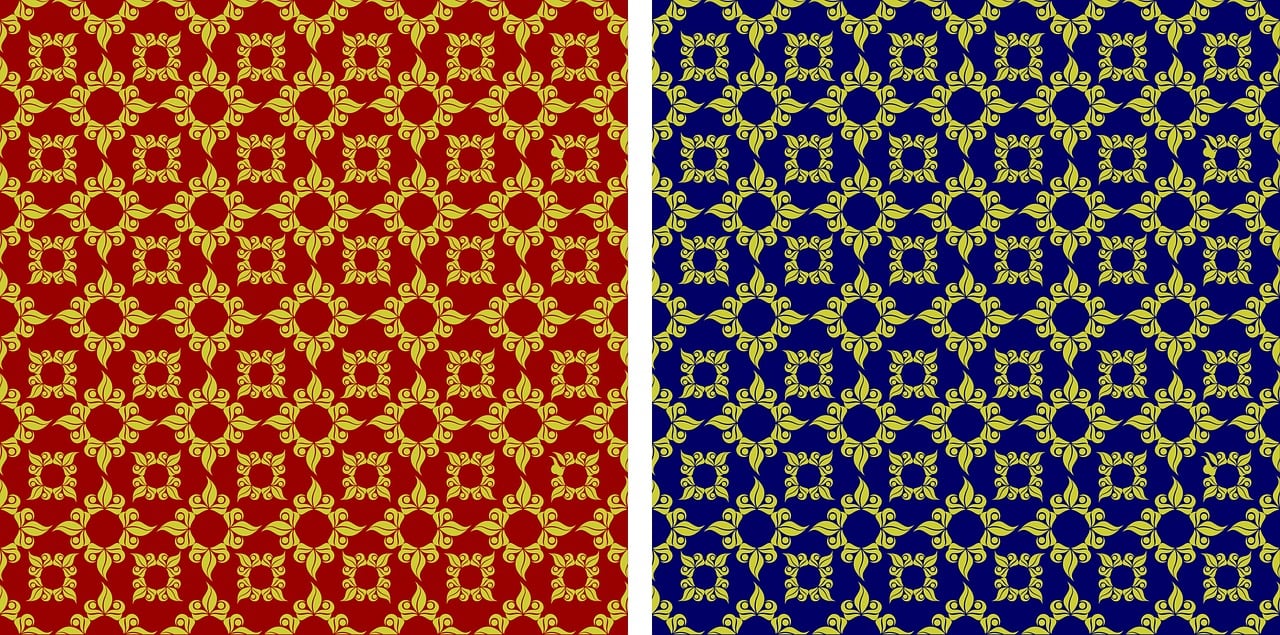
The Language of Flowers
This era saw the emergence of “The Language of Flowers,” a symbolic code in which each flower carried specific meanings and messages. Paintings often incorporated these symbolic blooms to convey hidden messages and emotions.
Certainly, let’s delve deeper into the idea of “The Language of Flowers” during this era and its impact on art and communication:
Floral Symbolism in Art and Communication:
During this era, known as the Victorian era, “The Language of Flowers” became a captivating means of non-verbal communication and artistic expression. This symbolic code assigned specific meanings to various flowers, allowing individuals to convey sentiments and emotions through carefully chosen blooms. Here’s how this phenomenon extended beyond mere symbolism:
Subtle Declarations of Love: “The Language of Flowers” offered a way to express love and affection discreetly. People could send secret messages to their loved ones by selecting flowers with romantic connotations like roses, symbolizing love or forget-me-nots, signifying true love.
Emotional Expression in Art: Artists of the time recognized the power of floral symbolism. Paintings often featured carefully selected flowers to add depth and meaning to their work. For instance, a painting of a woman holding a bouquet of lilies could signify purity and virtue.
Sentiments in Bouquets: Bouquets were carefully curated to convey specific emotions. A bouquet containing a mix of flowers like red roses for love, white lilies for purity and violets for loyalty could express a complex set of feelings.
Literary Inspiration: “The Language of Flowers” inspired poets and writers, who incorporated this symbolism into their works. Famous literary figures such as William Shakespeare and Charlotte Brontë used floral imagery to enhance the emotional impact of their writing.
Hidden Messages in Fashion: Beyond art, floral symbolism influenced fashion. Women wore dresses and accessories adorned with flowers to convey their feelings or make statements about their personalities.
Cultural Significance: This floral symbolism was not limited to Western culture. In Japan, the practice of Ikebana (flower arranging) has deep cultural and symbolic significance, emphasizing harmony, balance and simplicity in floral compositions.
Preservation of History: Today, “The Language of Flowers” is not just a relic of the past; it continues to be a subject of fascination and study. Historians and botanists delve into historical texts and artworks to uncover the meanings of long-forgotten floral symbols, preserving this rich aspect of cultural history.
In summary, “The Language of Flowers” during this era was a captivating fusion of art and communication. It allowed people to express complex emotions, sentiments and desires through carefully selected flowers, influencing not only interpersonal relationships but also the worlds of art, literature and fashion. This enduring legacy serves as a testament to the power of symbolism and the profound ways in which humans find creative outlets for self-expression.
You can also read more about this here: Why You Need to Know the History of Flowers in Art and Photography
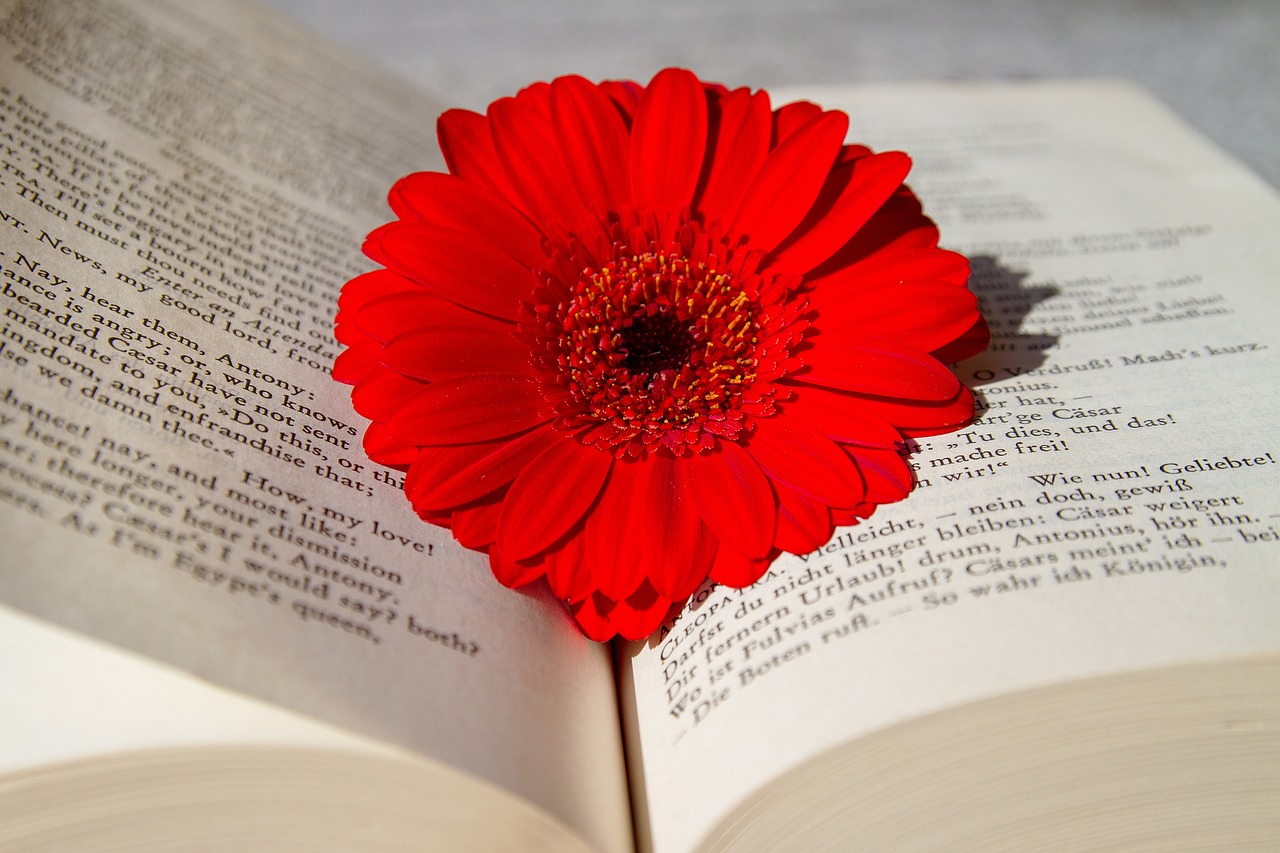
Flowers in Impressionism
The Impressionist movement, with artists like Monet, Renoir and Van Gogh, brought about a revolution in the portrayal of flowers. Instead of rigid, realistic depictions, Impressionists captured the essence of flowers through vibrant colors, loose brushwork and the interplay of light and shadow.
The Impressionist movement, led by iconic artists such as Monet, Renoir and Van Gogh, ignited a profound transformation in the world of art, particularly in the representation of flowers. Gone were the days of meticulously detailed and rigid depictions. Instead, Impressionists embarked on a remarkable journey to convey the very soul of flowers.
In their hands, flowers transcended mere subjects and evolved into vibrant symphonies of color and light. Each petal, each bloom, became a stroke of emotion, a burst of life and a testament to the fleeting beauty of nature.
Vivid pigments danced upon their canvases, reflecting the ever-changing moods of the flowers. The brushwork, though seemingly haphazard, was masterfully orchestrated to evoke a sense of spontaneity and immediacy, as if the flowers themselves had burst forth in a riot of colors.
Impressionists understood that the true essence of a flower lay not only in its physical form but also in the way it interacted with its surroundings. They harnessed the play of dappled sunlight through leaves, the shimmering reflections on water and the subtle interplay of shadows to create a mesmerizing dance between light and color.
In essence, the Impressionists elevated flowers to a realm beyond mere botanical accuracy. They presented us with a glimpse into the ethereal and ephemeral nature of these natural wonders. Through their art, we are transported to a world where the beauty of flowers is not just observed but felt, where every petal whispers secrets of the soul and where the essence of life itself is immortalized in vibrant hues and delicate brushstrokes.
To expand your knowledge on this subject, make sure to read on at this location: Explore the Language of Flowers at the DAM | Denver Art Museum
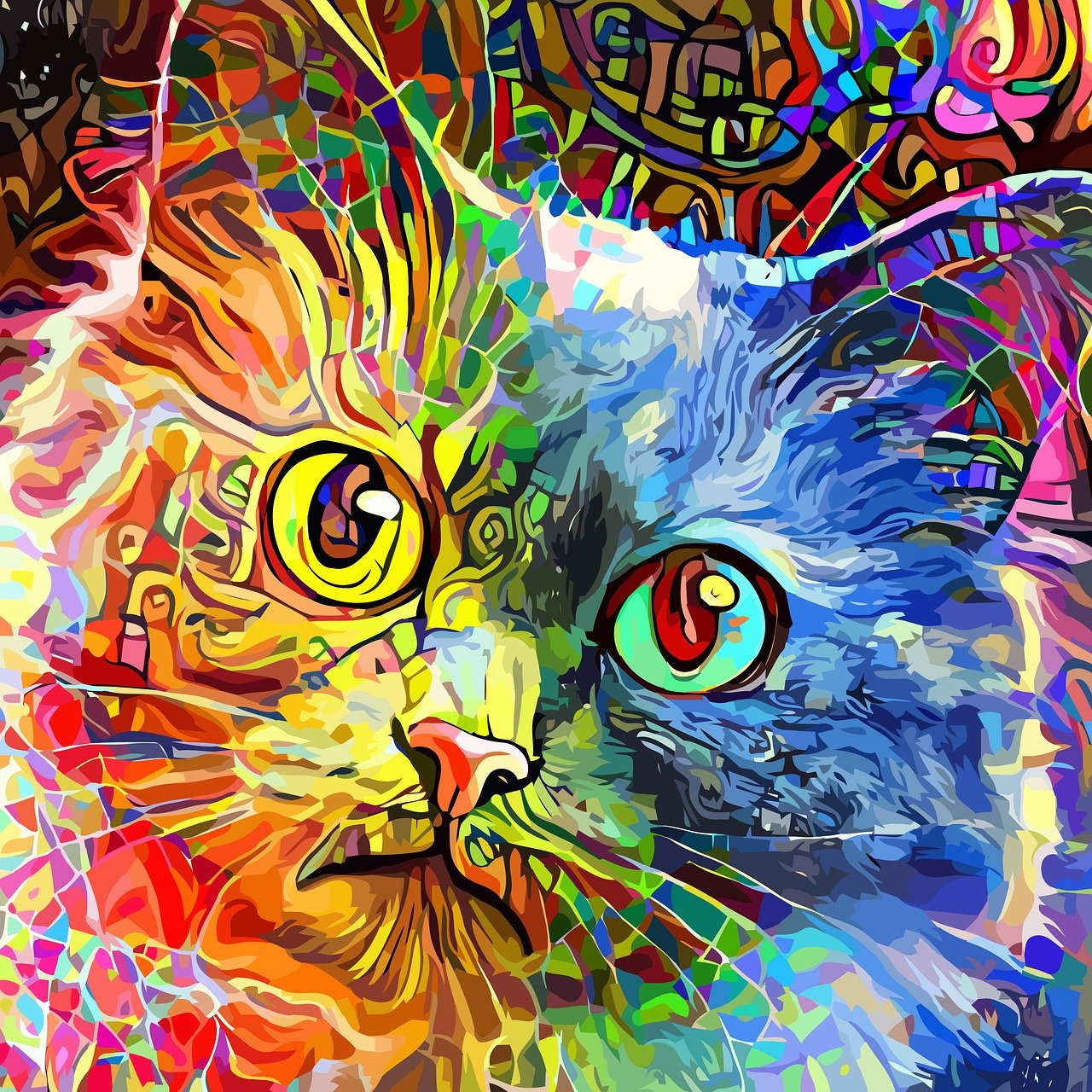
Monet’s Water Lilies
Monet’s iconic series of water lily paintings showcased his fascination with the changing beauty of these aquatic flowers. His work captured the shifting play of light on water, revealing the transience and fleeting nature of life.
Monet’s iconic series of water lily paintings stands as a testament to his profound connection with the natural world and his ability to convey its essence on canvas. Through these mesmerizing artworks, Monet not only showcased his fascination with the changing beauty of aquatic flowers but also unlocked a deeper understanding of the human experience.
Nature’s Timeless Beauty: Monet’s obsession with water lilies was more than just a fleeting artistic whim. It was a profound acknowledgment of the timeless beauty inherent in nature. As seasons changed and sunlight danced upon the water’s surface, he found inspiration in the ever-evolving palette of colors and shapes. In doing so, he reminded us that nature’s beauty endures, even as it undergoes constant transformation.
Capturing Transience: Monet’s genius lay in his ability to capture the transience of life itself through his water lily paintings. Each brushstroke seemed to freeze a moment in time, highlighting the ephemeral nature of existence. The play of light on water, the delicate petals floating on the surface and the ever-shifting reflections reminded viewers that life is a series of fleeting moments, much like the ripples on a pond.
Reflections of Inner Peace: Monet’s fascination with water lilies and his immersion in their world also reflect his pursuit of inner peace and serenity. The act of painting these scenes allowed him to immerse himself fully in the present moment, embracing the Zen philosophy of mindfulness. In a world marked by constant change and turmoil, Monet’s art invites us to find solace and tranquility in the simple beauty of the natural world.
Influence on Modern Art: Monet’s water lily series had a profound impact on the course of modern art. His exploration of light and color laid the foundation for Impressionism and influenced subsequent movements like Abstract Expressionism. His ability to convey emotion and contemplation through seemingly mundane subject matter continues to inspire artists today, reminding us of the enduring power of his vision.
Legacy of Appreciating Life’s Fleeting Moments: Monet’s work serves as a poignant reminder to embrace the present moment and find beauty in the everyday. In a fast-paced world, where distractions abound, his paintings encourage us to pause, reflect and appreciate the beauty that surrounds us, even in the most ordinary places. They prompt us to find joy in the transient nature of life and to cherish each passing moment.
In essence, Monet’s water lily series transcends the realm of art, offering a profound meditation on the impermanence and beauty of existence. Through his paintings, he invites us to connect with the ever-changing world around us, find solace in its fleeting moments and ultimately discover a deeper appreciation for the journey of life itself.
For additional details, consider exploring the related content available here An Epic Journey of Flowers Through the History of Art and Paintings …

Flowers in Contemporary Art
In contemporary art, flowers continue to inspire creativity in various forms, from paintings and sculptures to installations and digital art.
In contemporary art, flowers continue to inspire creativity in various forms, from paintings and sculptures to installations and digital art. Their enduring appeal as a subject matter lies in their multifaceted symbolism, vibrant colors and the way they connect with the human experience.
Symbolism and Metaphor: Flowers have been symbols of love, beauty, transience and rebirth for centuries. In contemporary art, artists often employ flowers as metaphors to convey complex emotions, ideas or narratives. For instance, a wilting flower might symbolize the fleeting nature of life, while a vibrant bloom can represent hope and renewal. Artists use this symbolism to engage viewers on a deep, emotional level.
Color and Aesthetics: The vivid and diverse colors found in flowers offer a rich palette for artists to explore. Whether it’s the fiery reds of poppies, the serene blues of forget-me-nots or the delicate pastels of cherry blossoms, flowers provide endless possibilities for color experimentation and expression. Contemporary artists often use bold, unconventional color choices to infuse their work with freshness and vitality.
Natural and Organic Forms: Flowers’ organic shapes and intricate patterns offer inspiration for artists exploring the aesthetics of nature. These forms are not only visually captivating but also resonate with the concept of harmony in art. Artists might abstract or exaggerate the shapes of flowers to create unique, eye-catching compositions that challenge viewers to see the familiar in new ways.
Environmental and Sustainability Themes: In an era marked by environmental awareness and sustainability concerns, flowers often feature prominently in art that addresses these issues. Artists use floral motifs to highlight the fragile beauty of our natural world and to draw attention to the importance of preserving it. Floral installations made from recycled materials or digital art that explores the impact of climate change are just a few examples of how contemporary artists engage with ecological themes.
Technological Innovation: The advent of digital art has opened up exciting new possibilities for artists to explore flowers in innovative ways. Digital tools enable artists to experiment with color, form and movement in ways that were once impossible. Interactive installations that respond to viewers’ movements or virtual reality experiences that immerse users in a floral wonderland are pushing the boundaries of what flower-inspired art can be.
Social and Cultural Commentary: Contemporary artists also use flowers to engage in social and cultural commentary. They may draw on the symbolism of specific flowers or explore the cultural significance of floral motifs in different contexts. Flowers can be a powerful means of sparking conversations about identity, politics and society.
In the contemporary art world, flowers continue to serve as a source of inspiration, a canvas for creative expression and a bridge between the natural and human-made realms. They offer artists a versatile and timeless medium through which to explore a wide range of themes, from the deeply personal to the globally significant. As long as flowers remain a part of the human experience, they will continue to flourish as a subject of artistic exploration and innovation.
To expand your knowledge on this subject, make sure to read on at this location: An Epic Journey of Flowers Through the History of Art and Paintings …
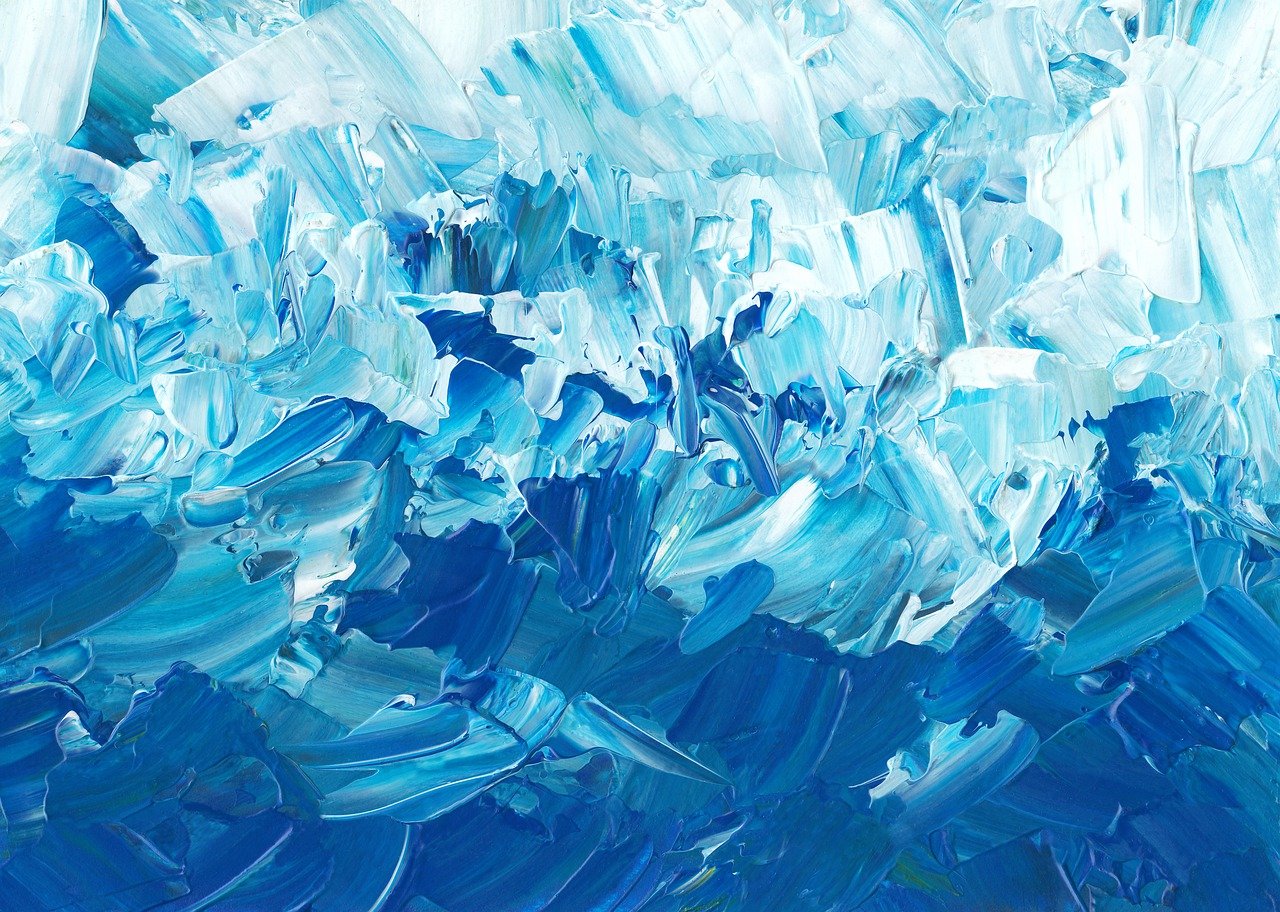
Georgia O’Keeffe
The American artist Georgia O’Keeffe is renowned for her close-up paintings of flowers, often portraying them in a way that evokes sensuality and abstraction.
The American artist Georgia O’Keeffe is renowned for her close-up paintings of flowers, often portraying them in a way that evokes sensuality and abstraction. Her unique perspective transformed ordinary blooms into extraordinary masterpieces, inviting viewers to explore the hidden intricacies and vibrant energy within nature’s most delicate creations.
O’Keeffe’s artistic journey was a voyage of discovery, as she delved deeper into the heart of her subjects. Her paintings of flowers, such as the iconic red poppies and luscious calla lilies, magnified the beauty that often goes unnoticed. Through her keen eye and innovative techniques, she encouraged us to see beyond the surface and contemplate the essence of these blooms.
In her hands, petals and stems transformed into graceful curves and bold shapes, blurring the lines between representation and abstraction. O’Keeffe’s work challenged conventional norms and allowed us to perceive flowers not just as botanical specimens but as symbols of life, sensuality and the ever-changing cycles of nature.
Her artistry extended beyond mere visual representation; it became a celebration of the spiritual and emotional connections humans share with the natural world. O’Keeffe’s flowers conveyed a sense of intimacy and personal connection, transcending the boundaries of traditional still life. They spoke to our senses, inviting us to touch, smell and feel the essence of the blooms.
Furthermore, O’Keeffe’s ability to convey sensuality through her floral compositions was groundbreaking. Her paintings often drew parallels between the organic forms of flowers and the human body, blurring the boundaries between the two. In doing so, she invited us to explore the sensual and erotic dimensions of nature itself.
Through her pioneering work, Georgia O’Keeffe not only redefined the genre of flower painting but also left a lasting legacy that continues to inspire artists and nature enthusiasts alike. Her ability to capture the essence of flowers, their sensuality and their abstract beauty remains a testament to the power of art to transform the ordinary into the extraordinary, to make us see the world around us with new eyes and to connect us with the profound mysteries of nature.
You can also read more about this here: The Georgia O’Keeffe Museum
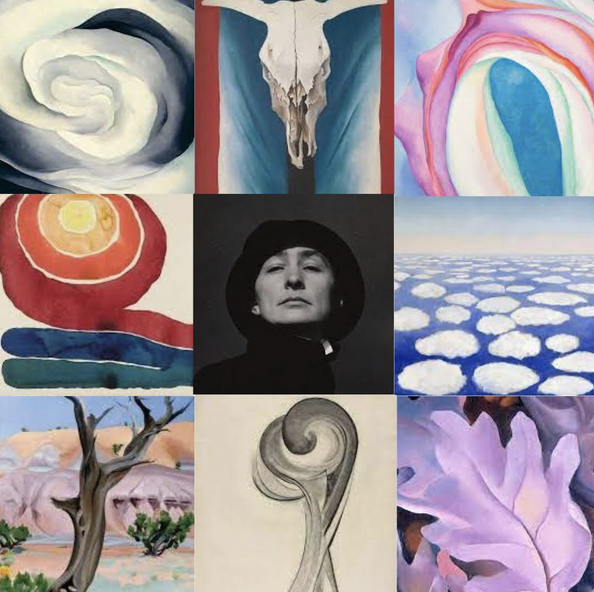
Floral Installations
Contemporary artists like Rebecca Louise Law create immersive floral installations, blurring the lines between art and nature. These living sculptures challenge our perception of traditional art forms.
Contemporary artists like Rebecca Louise Law create immersive floral installations, blurring the lines between art and nature. These living sculptures challenge our perception of traditional art forms by embracing the ephemeral beauty of flowers and harnessing their temporal qualities to convey powerful messages.
Law’s work and that of artists like her remind us of the transient nature of life and the ever-changing seasons of existence. These installations are not static; they evolve as the flowers bloom, wither and ultimately decay. This natural progression becomes an integral part of the art, symbolizing the cycle of life and the impermanence of all things.
Moreover, these floral installations serve as a powerful commentary on environmental consciousness. By using living materials that will eventually return to the earth, artists like Law highlight the importance of sustainability and our connection to the natural world. They challenge us to reconsider our relationship with nature, encouraging us to appreciate its beauty and fragility while also recognizing our responsibility to protect it.
In a world saturated with digital imagery and mass-produced art, these living sculptures engage our senses in a unique way. They invite us to experience art with not just our eyes but also our sense of smell and touch. The fragrant blossoms and the tactile quality of the installations create a multisensory encounter, forging a deeper emotional connection with the artwork.
In essence, contemporary floral installations like those by Rebecca Louise Law redefine the boundaries of art, reminding us that creativity knows no bounds and that nature itself can be a canvas for profound expression. They challenge us to embrace impermanence, celebrate the natural world and engage with art in a more sensory and sustainable manner.
To expand your knowledge on this subject, make sure to read on at this location: ‘The Flower of Tujia’ Weaves History and Culture Through 150,000 …

Flowers in Popular Culture
Flowers have also permeated popular culture, becoming symbols of love, beauty and celebration. They are integral to rituals like weddings and funerals, where they convey profound emotions and messages.
Flowers have not only graced our gardens and homes but have also seamlessly woven their way into popular culture, becoming potent symbols of love, beauty and celebration. These delicate blooms have a unique ability to transcend language and culture, conveying profound emotions and messages with their vibrant petals and fragrant blooms.
In the realm of love, flowers have long been a universal expression of affection and desire. A single red rose, for instance, can speak volumes, representing deep love and desire. Bouquets of various flowers can convey different feelings, from the passion of red roses to the purity of white lilies. Whether it’s a romantic gesture on Valentine’s Day or a simple bouquet to say “I love you,” flowers continue to be a timeless symbol of affection in our fast-paced, modern world.
Beyond matters of the heart, flowers are essential players in significant life events. In weddings, they take center stage, adorning venues and bridal bouquets alike. Each flower type carries its own significance, from the purity of the white lily to the longevity symbolized by the orchid. These carefully chosen floral arrangements not only enhance the visual beauty of the occasion but also convey profound messages of hope, new beginnings and the unity of two souls.
Conversely, in times of mourning and loss, flowers provide solace and express sympathy when words alone fall short. Funeral wreaths, sprays and sympathy bouquets offer a tangible way to convey condolences and support to those who grieve. The choice of flowers in such somber moments can signify a sense of respect, remembrance and the enduring beauty of life, even in the face of loss.
In essence, flowers are not merely decorative elements; they are the embodiment of our most profound human emotions. They have a unique ability to capture the essence of our feelings, transcending cultural boundaries and bridging gaps between individuals. Whether it’s a simple gesture or a grand celebration, flowers continue to hold a cherished place in our lives as powerful messengers of love, beauty and the shared human experience.
To expand your knowledge on this subject, make sure to read on at this location: An Epic Journey of Flowers Through the History of Art and Paintings …
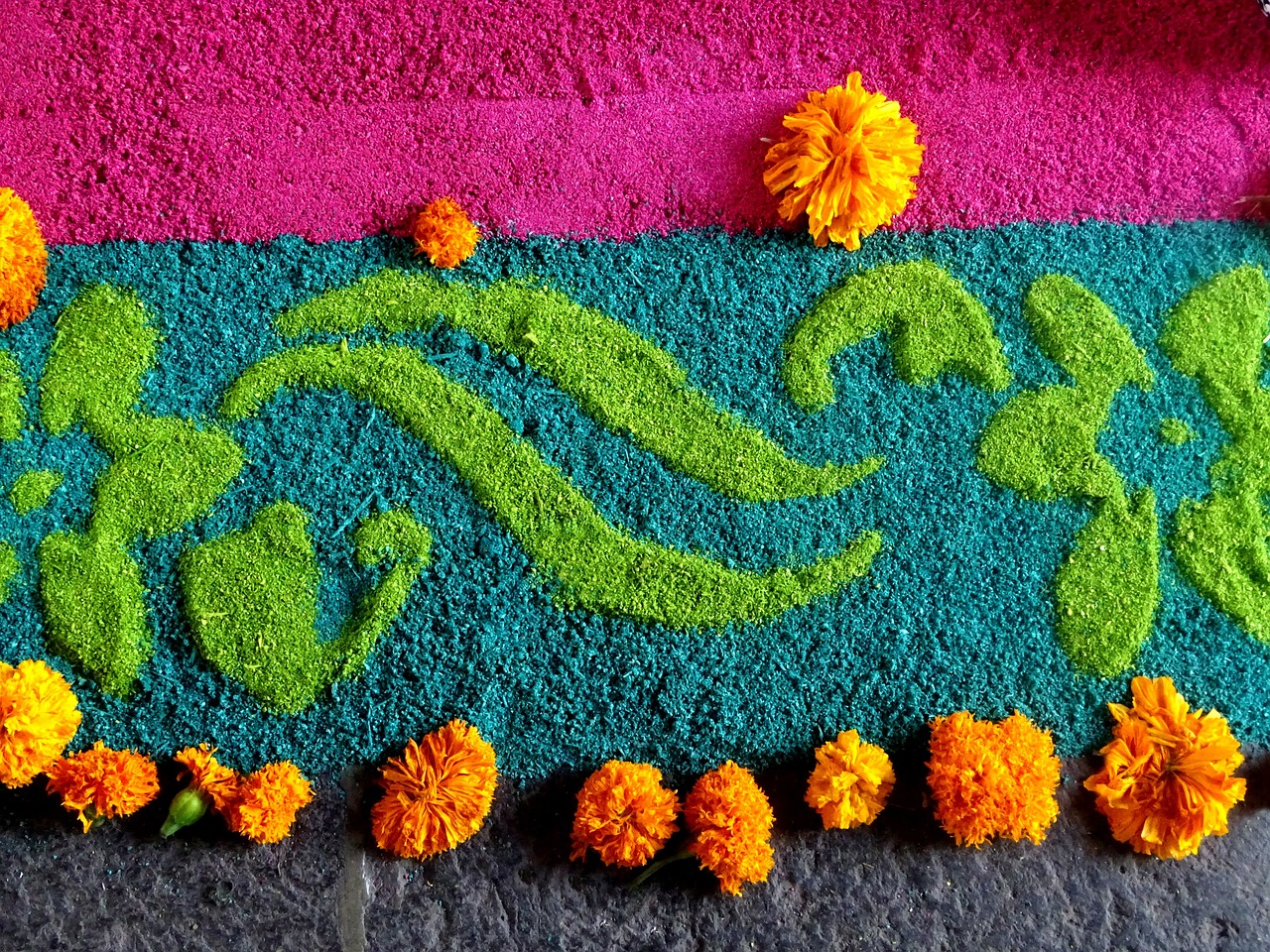
Throughout history, flowers have transcended their botanical existence to become powerful symbols and muses in the world of art and culture. They have inspired artists to explore themes of beauty, transience and the human connection with nature. From ancient civilizations to contemporary expressions, the creative influence of flowers endures as a testament to their enduring allure and significance in the human experience. The artistry of flowers continues to flourish, reminding us of the timeless connection between nature and the human soul.
Throughout history, flowers have transcended their botanical existence to become not just subjects of art but powerful symbols and muses that have left an indelible mark on the world of culture and creativity. They have inspired artists from every corner of the globe to delve into themes that explore the very essence of existence—beauty, transience and the profound connection between humanity and the natural world. Whether in the form of ancient scrolls, Renaissance paintings or contemporary installations, the creative influence of flowers endures as a testament to their enduring allure and significance in the human experience. The artistry of flowers, like an eternal bloom, continues to flourish, reminding us, with each petal and brushstroke, of the timeless and unbreakable bond between nature and the human soul.
In the earliest epochs of human civilization, flowers were etched onto cave walls, woven into garments and depicted in rudimentary drawings. These ancient representations, though simple in form, revealed an innate human fascination with the beauty and mystery of the natural world. Flowers became symbols of life’s vitality, echoing the cyclical rhythms of birth, growth, decay and rebirth that characterized existence.
As cultures evolved, so did the artistic expressions of flowers. In classical antiquity, the floral motifs of ancient Greece and Rome adorned everything from pottery to architecture. The symbolism attached to various flowers deepened. The rose came to represent love and desire, the lily purity and virtue and the lotus enlightenment and rebirth.
During the Renaissance, flowers experienced a resurgence in art, taking on new layers of symbolism and complexity. Painters like Botticelli and van Eyck wove intricate floral symbolism into their masterpieces, imbuing their works with allegorical meanings that went beyond mere aesthetics. Flowers were depicted as tokens of love, emblems of virtue and reminders of life’s fragility.
In the modern era, artists like Georgia O’Keeffe explored the intricate beauty of flowers through close-up, abstract compositions that celebrated the sensuality and vitality of blooms. In her iconic flower paintings, the boundaries between the floral and the human form blurred, inviting viewers to contemplate the intimate connection between nature and the self.
Today, contemporary artists continue to draw inspiration from flowers, using them as powerful metaphors to explore a wide range of themes, from environmental concerns to questions of identity and gender. The art world has witnessed the emergence of stunning floral installations, interactive exhibits and multimedia works that challenge conventional notions of beauty and invite audiences to engage with nature in new and thought-provoking ways.
In conclusion, the timeless allure of flowers as subjects of artistic expression serves as a testament to their enduring significance in the human experience. Throughout history, flowers have evolved from simple symbols to complex metaphors, reflecting the evolving cultural and social landscapes of the world. In the artistry of flowers, we find not just beauty but a profound reminder of our intrinsic connection with the natural world—a connection that continues to inspire, challenge and nourish the human soul.
To delve further into this matter, we encourage you to check out the additional resources provided here: Nature in Art: Detailed Discussion of Nature Inspired Art and Artists …
More links
Explore this link for a more extensive examination of the topic: 14 Groundbreaking African American Artists That Shaped History
